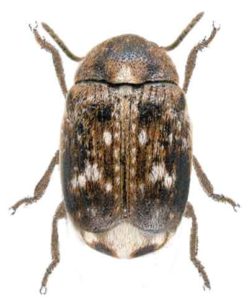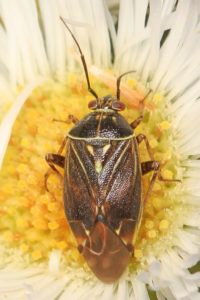Vetch Insects
Vetch bruchid

Figure 71. Vetch bruchid adult. Public domain.
One of the most damaging pests of hairy vetch grown for seed is the vetch bruchid, or vetch weevil (Fig. 71). This insect does not attack the seed of plain or smooth varieties of vetch.
The legless larva is yellowish white with a black head and is found only inside the vetch seed. The adults are about 1/8 inch long and black with mottled markings of white and gray.
Although the adults feed on developing flower buds and pollen, the larvae cause the primary damage by consuming the developing seed.
Bruchids do not reproduce in stored vetch seed but may be found occasionally inside the seed hulls. The adult bruchid overwinters in vetch fields or nearby. In the spring, the females glue their eggs to the developing seed pods.
After hatching, the larva tunnels through the pod wall and into the immature seed. Only one weevil develops within a seed. The larvae feed on the developing seed for about 4 weeks.
The adult bruchid emerges from inside the seed through the circular hole previously made by the larva. There is only one generation per year.
Management
Insecticide treatments must be timed to kill adults before they begin to deposit eggs on the seed pods. Larvae hatching from eggs will tunnel directly into the pod, thus avoiding contact with insecticides.
Apply insecticide (Table 19) shortly after the first pods appear and when the eggs are on the pods. If adult bruchids are present about a week after application, a second application may be necessary to maintain control. A sweep net (page 15) is effective in sampling a field for adult bruchids.

Figure 46. Pea aphid showing dark bands on the tips of the antennae. Photo by Phil Sloderbeck, Kansas State University, Bugwood.org (CC BYNC 3.0 US)
Note that insecticides such as malathion and zeta-cypermethrin are toxic to all bees. To minimize the impact of insecticides on bees, treat in the late evening or at night after the bees are no longer foraging. Also, work with nearby beekeepers to protect bees from insecticide treatments. Refer to the insecticide label for restrictions regarding pollinators.
Pea aphids, thrips, and lygus bugs
Sucking insect pests of vetch include pea aphids (Fig.46), thrips, and lygus bugs (Fig. 72). Treatment guidelines have not been developed for these vetch pests.
Pea aphids are bright green and often most abundant in the spring. They suck plant sap from the terminals and stems. Feeding can cause plant wilting, yellowing foliage, and reduced seed production.

Figure 72. Lygus bug. Photo by Judy Gallagher.
Lady beetles, lacewing flies, and other beneficial insects feed on pea aphids. If warranted, apply insecticide (Table 19) to control these aphids.
Thrips are tiny (1/15 inch long), cigar-shaped insects with bodies that are much longer than they are wide. They are generally yellow to light brown.
Large numbers of thrips may cause blasting (abortion or deformed at emergence) and shedding of blooms in seed-production fields.
Lygus bugs are oval, 1/4 inch long, and relatively flat in profile. They may be dark brown, light tan, light yellow, or light green and have a distinctive light-colored triangle in the middle of the back.
Lygus bugs are a concern in seed production fields because they feed on flower buds, causing flower abortion.
